
Is it time to redesign your website? Knowing when to refresh your online presence is crucial for staying competitive. From outdated design elements to poor user experience, understanding the signs can help you make informed decisions about your digital strategy. Stay tuned to learn how a fresh website design can enhance user engagement and drive business growth.
Table of Contents
Key Takeaways
- Recognize the Signs: Pay attention to indicators like outdated design, poor user experience, or declining traffic to know when it’s time to redesign your website.
- Stay Current: Align your website with the latest web design trends to maintain a modern and appealing online presence.
- Professional Touch: Invest in professional web design to create a polished and trustworthy image for your brand.
- Mobile Matters: Ensure your website is mobile-friendly for a seamless user experience on smartphones and tablets, improving overall engagement.
- Speed Up: Regularly check and optimize your website’s speed and performance to prevent user frustration and boost search engine rankings.
- Navigate with Ease: Improve site navigation to help visitors find information quickly and enhance their browsing experience.
- Consistent Messaging: Adapt your website to reflect any changes in your brand message or offerings to maintain brand consistency across all platforms.
- SEO Optimization: Address any SEO shortcomings during the redesign process to improve search engine visibility and attract more organic traffic.
Signs You Need a Redesign
Conduct Audit
Perform a thorough website audit to identify outdated design elements and functionality that may be hindering user experience and business goals. This includes evaluating:
- Overall Design and Layout: Is your website visually appealing and easy to navigate? Does it reflect current design trends?
- Functionality: Does your website function properly across different devices? Are there any broken links or features that don’t work as intended?
- Branding Consistency: Are your brand elements like colors, fonts, and imagery consistent throughout the website? Do they align with your current brand identity?
An outdated website can negatively impact user experience, brand perception, search engine ranking, and ultimately, sales.
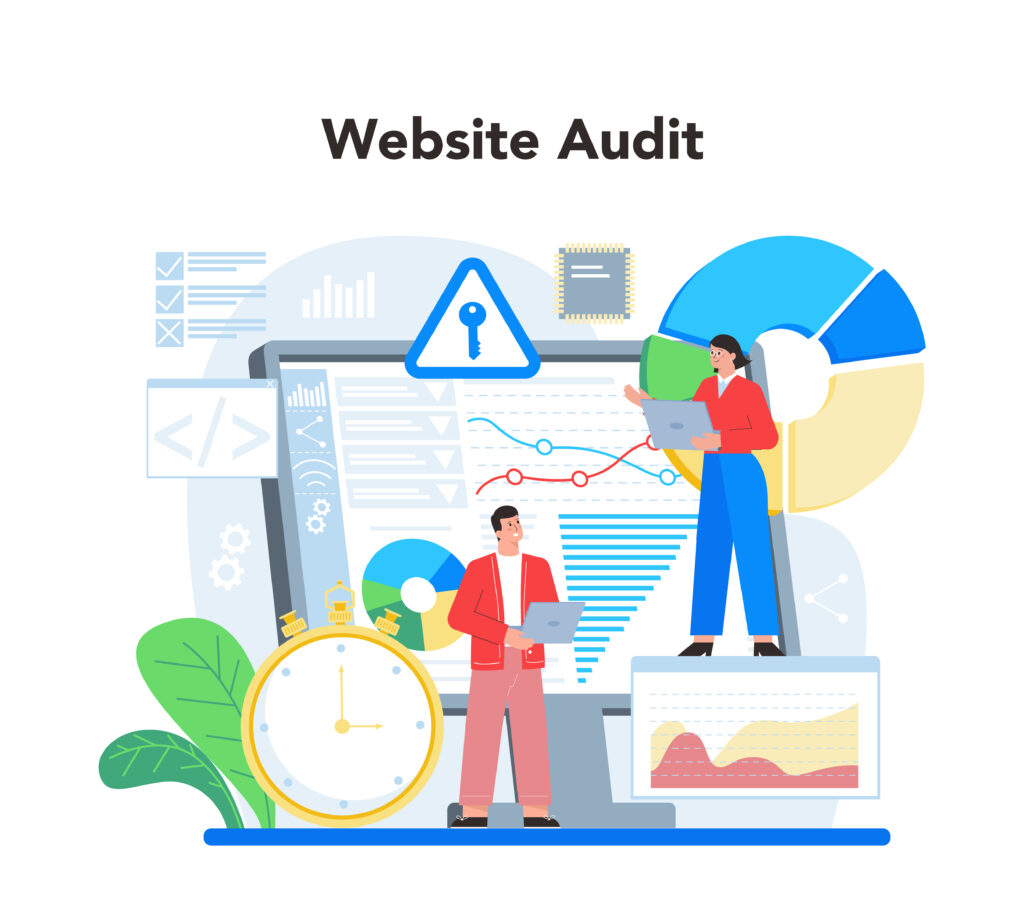
Monitor Feedback
Keep an eye on user feedback and engagement metrics to gauge user satisfaction levels. Look for comments about usability issues, outdated content, or difficulties in navigating your site.
Analyze metrics like bounce rates, time spent on page, and conversion rates to understand how users are interacting with your website. A significant drop in these metrics could indicate a need for a redesign.
Reflect Brand Growth
Evaluate whether your current website accurately reflects the growth and evolution of your brand. If your business has expanded, rebranded, or introduced new products/services, ensure that your website conveys these changes effectively.
Ensure that your website’s messaging aligns with your current business goals and objectives. Your website should serve as a digital storefront that showcases your brand’s strengths and offerings.
Aligning with Current Web Trends
Implementing Modern Design Trends
To stay relevant, align your website with current web trends by incorporating minimalism and bold typography. These design elements create a fresh look that appeals to modern audiences. Research shows that websites following these trends often attract more visitors.

Ensuring Responsiveness and Optimization
Make sure your website design is responsive across all devices. With the increasing use of smartphones and tablets, it’s crucial to provide a seamless user experience regardless of the device being used. Optimizing your site for various screen sizes enhances user engagement.
Enhancing User Experience with Visual Elements
Incorporate visually appealing elements like animations or videos to captivate visitors and keep them engaged. These elements not only make your website more dynamic but also help in conveying information more effectively. Research indicates that users tend to spend more time on websites with engaging visual content.
Importance of Professional Design
Invest in professional web designers to create a website that prioritizes both visual appeal and user experience. A well-designed website with a clean layout, eye-catching visuals, and intuitive navigation captures visitors’ attention instantly and keeps them engaged.
High-quality images, graphics, and a user-friendly layout all contribute to a positive user experience. Engaging visuals not only enhance the aesthetics of your site but also effectively convey your brand message. This, in turn, influences how users perceive and interact with your website.
Easy navigation allows users to find information quickly, reducing bounce rates and boosting engagement. By prioritizing user experience, you create a website that is not only visually appealing but also functional and informative.
Benefits:
- Elevated Brand Image: Professional design elevates your brand image, portraying you as a trustworthy and reliable business.
- Enhanced User Experience: A website that prioritizes user experience keeps visitors engaged and encourages them to explore further.
- Increased Engagement Levels: Intuitive navigation and user-friendly design boost user engagement, leading to more conversions.
Optimizing for Mobile Experience
Seamless Browsing Across Devices
Implement a responsive design that automatically adjusts your website layout to fit various screen sizes. This ensures a smooth browsing experience for users on smartphones, tablets, and desktops.
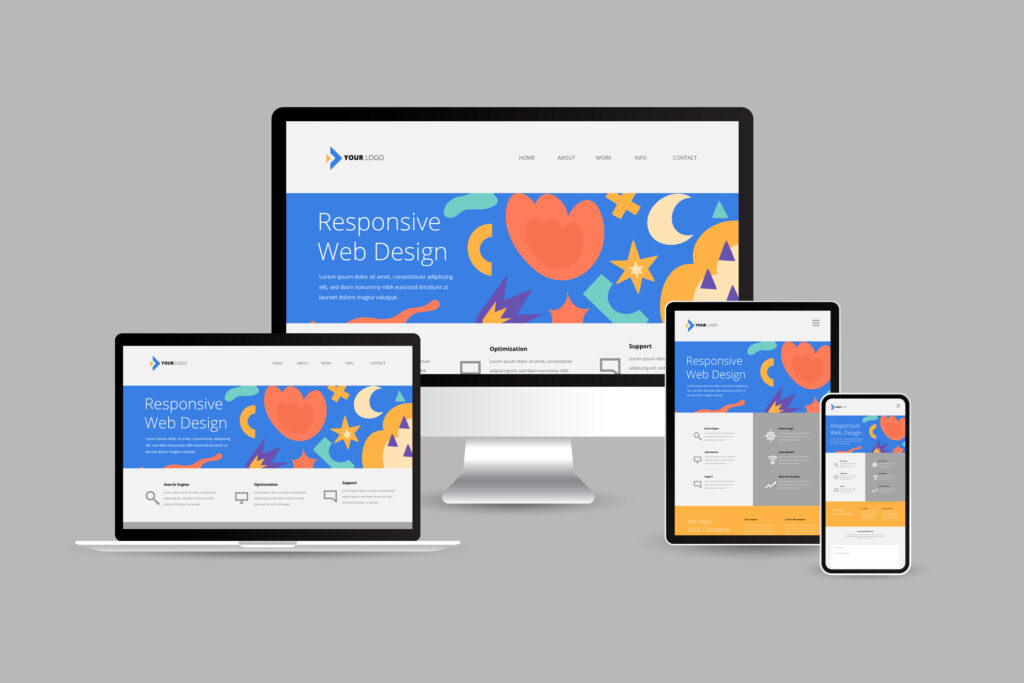
Conversion Rates
A mobile-optimized website significantly impacts conversion rates. Studies show that users are more likely to convert (e.g., make a purchase, sign up for a newsletter) on websites with a smooth mobile experience. By offering a user-friendly mobile version, you can directly boost your business goals.
Enhanced User Satisfaction
Focus on key elements that contribute to a positive user experience on mobile devices:
- Quick Loading Times: Users expect websites to load quickly. Optimize your site for speed by implementing techniques like lazy loading images and minimizing unnecessary elements.
- Intuitive Navigation: Make it easy for users to find what they’re looking for by prioritizing clear and concise navigation. A well-organized website with a simple menu structure allows for effortless browsing on mobile devices.
Website Speed and Performance Checks
Regular Testing
Regularly conduct speed tests to identify any performance issues that may be affecting your website. By doing so, you can pinpoint areas that need improvement.
Images and videos are crucial elements of a website, but they can also slow down loading times. Optimize these media files to ensure faster loading speeds for users.
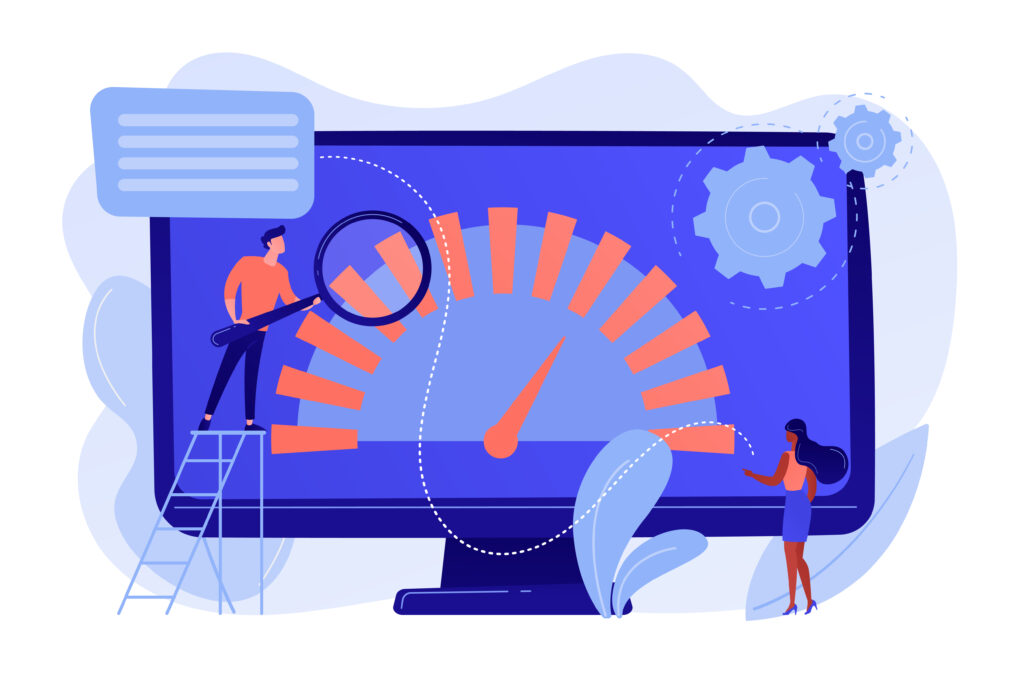
Optimization Techniques
Utilize caching mechanisms to store frequently accessed data, reducing the need to fetch it from the server repeatedly. This significantly improves website speed.
Content Delivery Networks (CDNs) are essential for distributing content across various servers worldwide. By leveraging CDNs, you can enhance user experience by delivering content more efficiently.
Enhancing Lead Generation Online
Clear Call-to-Action
Implementing clear call-to-action buttons and forms is crucial to prompt user engagement on your website. These elements guide visitors on what actions to take, such as signing up for newsletters or requesting quotes. By making these prompts prominent and compelling, you can effectively capture the interest of potential customers.
Craft CTAs that stand out, using concise and action-oriented language like “Get Started” or “Contact Us Today.” Avoid cluttering your pages with multiple CTAs to prevent confusion among users. Instead, strategically place them where they are most likely to be seen, such as at the end of blog posts or on product pages.
You may conduct A/B testing to determine which strategy works best to attract your target audience and refine your approach accordingly.
Tailored Landing Pages
Designing compelling landing pages tailored to specific target audiences can significantly impact your business results. Create landing pages that align with the messaging of your marketing initiatives, ensuring consistency throughout the user’s journey. Personalize content based on visitor demographics or interests to increase relevance and conversions.
When developing landing pages, focus on a single objective, whether it’s promoting a new product, collecting leads, or driving event registrations. Keep the layout clean and visually appealing, with concise copy that highlights the value proposition. A/B test different elements like headlines, images, and forms to optimize performance continuously.
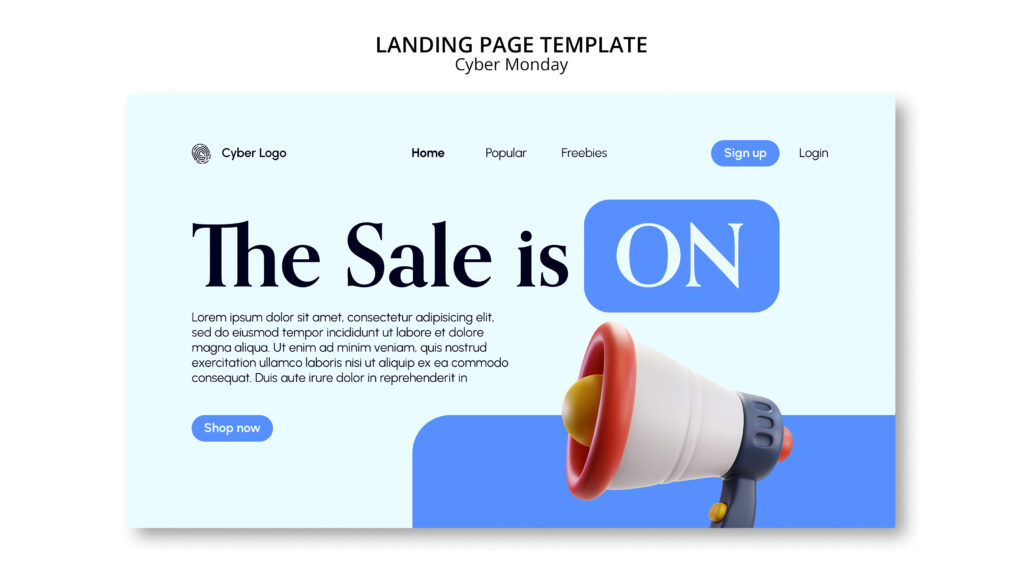
Analytics for Optimization
Utilizing analytics tools to track and optimize lead generation performance is essential for understanding user behavior on your website. By analyzing metrics such as conversion rates, bounce rates, and click-through rates, you can identify areas for improvement and refine your strategies accordingly.
Set up goals in Google Analytics to monitor specific actions taken by visitors, such as form submissions or purchases. Use this data to make data-driven decisions when adjusting your website’s design or content. Regularly review reports to gain insights into which marketing initiatives are driving the most valuable leads.
Improving Site Navigation
Simplify Navigation
Organize content into clear categories and menus to enhance the user experience. Users should easily find what they are looking for.
Implementing a logical structure on the website helps users navigate effortlessly through different sections and pages.
Enhance User Accessibility
Incorporate breadcrumbs on each page to show users their path back to the homepage or previous pages. This feature aids in improving site navigation.
Integrating a search functionality allows users to directly search for specific information, ensuring quick access to desired content.
Streamline User Journey
Create a smooth flow from landing pages to conversion points by strategically placing call-to-action buttons and links throughout the site.
Optimize landing pages with relevant information and engaging visuals to guide users towards taking desired actions.
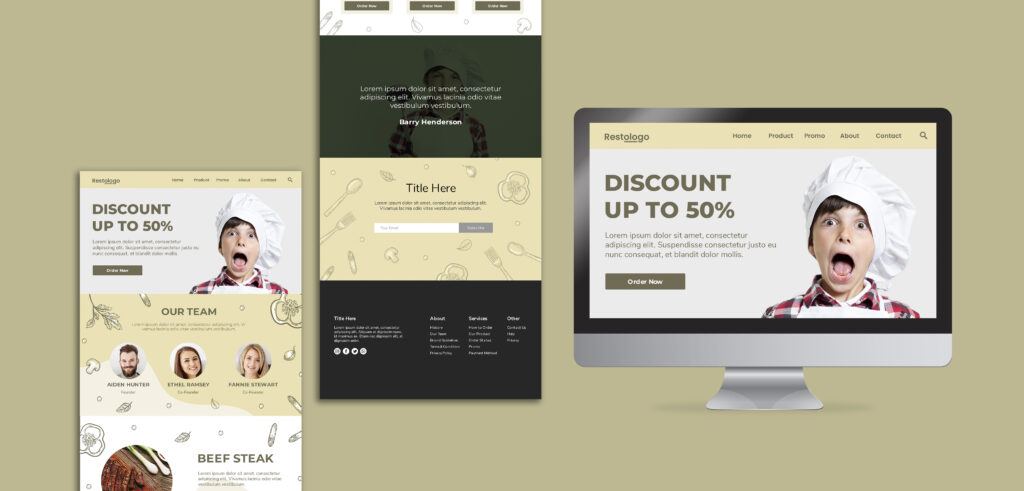
Adapting to Brand Message Changes
Aligning with Brand Messaging Updates
When brand messaging evolves, it’s crucial to align your website design accordingly. Ensure that the visual elements and content on your site reflect the current brand identity. This alignment helps in maintaining a consistent and cohesive brand image across all platforms.
Updating Visual Elements
To keep up with changes in brand messaging, consider updating the visual elements on your website. This includes logos, color schemes, typography, and overall design aesthetics. By refreshing these elements, you can effectively communicate the new brand message to your audience.

Consistency in Branding
Consistency is key when it comes to branding. Make sure that the updates to your website align with your brand’s core values and messaging. This consistency should be maintained not only on your website but also across all other communication channels such as social media, emails, and marketing materials.
Addressing SEO Shortcomings
Conduct SEO Audit
Performing an SEO audit is crucial to pinpoint common mistakes and areas needing improvement on your website. By analyzing factors like meta tags, headings, and content quality, you can identify weaknesses that hinder your site’s performance in search engine rankings.
A comprehensive audit reveals SEO shortcomings, such as missing meta descriptions, duplicate content, or broken links. These issues can negatively impact your website’s visibility and traffic. By addressing these shortcomings promptly, you can enhance your site’s overall performance.
Optimize Keywords and Content
To improve SEO, optimize meta tags, headings, and content with relevant keywords and phrases. Incorporating target keywords naturally into your content helps search engines understand the relevance of your pages to users’ queries. This optimization boosts your chances of ranking higher in search results for specific search terms.
Effective keyword optimization involves researching high-volume, low-competition keywords that align with your brand and target audience. By strategically placing these keywords throughout your website’s content, you can attract more organic traffic and improve your site’s visibility online.
Develop Backlink Strategy
Implementing a solid backlink strategy is essential for enhancing your website’s SEO performance. High-quality backlinks from reputable websites signal to search engines that your site is trustworthy and valuable to users. Focus on acquiring backlinks from authoritative sources within your industry to boost your site’s credibility.
Creating shareable content plays a key role in attracting backlinks naturally. By producing engaging articles, infographics, or videos that resonate with your audience, you increase the likelihood of other websites linking back to your content. This not only improves your SEO but also drives referral traffic to your site.

Closing Thoughts
Recognizing the signs that indicate a website redesign is necessary is crucial for maintaining online relevance. Aligning with current web trends, ensuring mobile compatibility, and focusing on user experience are key elements in attracting and retaining visitors. Professional design, optimized site speed, and effective lead generation strategies contribute significantly to a website’s success. Improving navigation, adapting to brand message changes, and addressing SEO shortcomings are essential for staying competitive in the digital landscape.
To stay ahead in the online realm, regularly evaluating your website’s performance and making necessary updates is imperative. Embracing change and implementing best practices will not only enhance user engagement but also boost your site’s visibility and credibility. Remember, a well-designed website is the cornerstone of a strong online presence.
Related Article:
The following article may contain the author’s opinions and interpretations of the subject matter. Any of the products, services, or platforms mentioned is not sponsored or affiliated.
Featured Image courtesy of freepik
